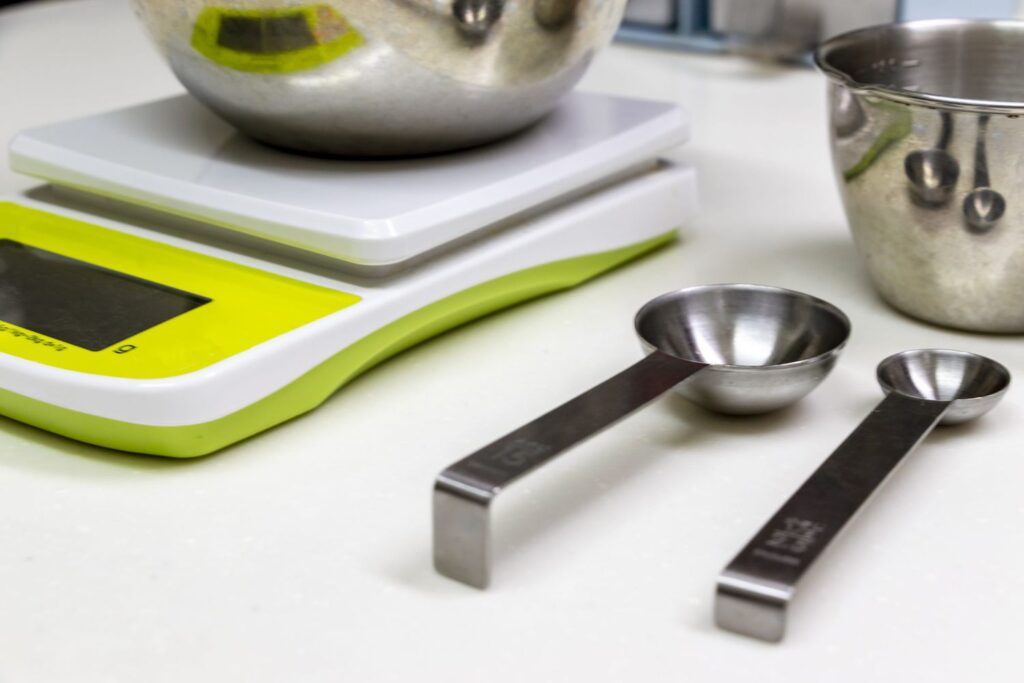Understanding the Conversion: How Many Cups is 50 Grams?
Converting grams to cups is a common challenge in cooking and baking, especially for those who are accustomed to using the metric system. Understanding how to convert 50 grams into cups can help ensure that recipes are followed accurately, leading to better culinary results. This article will provide a comprehensive overview of this conversion, including the factors that affect the conversion, examples with various ingredients, and practical tips for accurate measurements.
Table of Contents
- Introduction
- Understanding Grams and Cups
- Definition of Grams
- Definition of Cups
- Factors Affecting Conversion
- Density of Ingredients
- Type of Ingredient
- How Many Cups is 50 Grams?
- Common Ingredients Conversion
- Conversion Table
- Practical Tips for Accurate Measurement
- Why Accurate Measurements Matter
- FAQs
- Conclusion
- References
Introduction
When it comes to cooking and baking, precision is key. Many recipes use grams as a unit of measurement, particularly in countries that utilize the metric system. However, in the United States, cups are often the standard for measuring ingredients. This discrepancy can lead to confusion, especially when trying to convert grams to cups.In this article, we will focus on how many cups correspond to 50 grams and provide a comprehensive guide to make this conversion easier for you.
Understanding Grams and Cups
Definition of Grams
Grams (g) are a metric unit of mass used to measure weight. One gram is equal to one-thousandth of a kilogram. Grams are commonly used in cooking, especially in baking, where precise measurements can significantly impact the final product.
Definition of Cups
Cups are a unit of volume measurement commonly used in cooking, particularly in the United States. One cup is equivalent to approximately 236.6 milliliters. Cups are often used to measure liquids and dry ingredients, but the volume can vary based on the density of the ingredient being measured.
Factors Affecting Conversion
Density of Ingredients
The density of an ingredient plays a crucial role in the conversion from grams to cups. Different ingredients have different densities, which means that the same weight can occupy different volumes. For example, 50 grams of flour will take up a different amount of space than 50 grams of sugar.
Type of Ingredient
The type of ingredient being measured will significantly affect the conversion. For instance, 50 grams of a dense ingredient like butter will occupy less volume than 50 grams of a light ingredient like powdered sugar.
How Many Cups is 50 Grams?
The conversion of 50 grams to cups varies depending on the ingredient being measured. Below are common conversions for various ingredients.
Common Ingredients Conversion
- Granulated Sugar: 50 grams is approximately 0.25 cups (1/4 cup).
- Brown Sugar: 50 grams is approximately 0.25 cups (1/4 cup) when packed.
- All-Purpose Flour: 50 grams is approximately 0.4 cups (2/5 cup).
- Butter: 50 grams is approximately 0.22 cups (just under 1/4 cup).
- Water: 50 grams is approximately 0.21 cups (about 1/5 cup).
Conversion Table
| Ingredient | 50 Grams (g) | Cups (US) |
|---|---|---|
| Granulated Sugar | 50 g | 0.25 cups (1/4) |
| Brown Sugar (packed) | 50 g | 0.25 cups (1/4) |
| All-Purpose Flour | 50 g | 0.4 cups (2/5) |
| Butter | 50 g | 0.22 cups |
| Water | 50 g | 0.21 cups |
| Honey | 50 g | 0.15 cups |
| Milk | 50 g | 0.21 cups |
| Rice (uncooked) | 50 g | 0.25 cups |
| Oats | 50 g | 0.31 cups |
Practical Tips for Accurate Measurement
- Use a Kitchen Scale: The most accurate way to measure ingredients in grams is to use a digital kitchen scale. This ensures precision and consistency in your measurements.
- Fluff and Spoon: For dry ingredients like flour, fluff the ingredient in its container before spooning it into a measuring cup. This helps avoid packing, which can lead to inaccurate measurements.
- Level Off: Use a straight edge to level off the top of the measuring cup for dry ingredients to ensure you’re not adding extra.
- Know Your Ingredients: Familiarize yourself with the density of the ingredients you commonly use. This knowledge will help you make better conversions in the future.
Why Accurate Measurements Matter
Accurate measurements are crucial in cooking and baking for several reasons:
- Consistency: Precise measurements ensure that recipes turn out the same way every time, allowing for consistent results.
- Recipe Integrity: Many recipes are developed with specific measurements in mind. Deviating from these can alter the final product.
- Baking Science: Baking is a science that relies on chemical reactions. Accurate measurements help achieve the desired texture and flavor.
FAQs
How do I convert grams to cups?
To convert grams to cups, you need to know the density of the ingredient. For example, to convert 50 grams of flour to cups, you would divide 50 by the grams per cup for flour (approximately 125 grams per cup), resulting in 0.4 cups.
Is 50 grams of flour the same as 50 grams of sugar in cups?
No, 50 grams of flour is not the same as 50 grams of sugar in cups. Due to differences in density, 50 grams of flour is approximately 0.4 cups, while 50 grams of sugar is approximately 0.25 cups.
Can I use a measuring cup for grams?
Measuring cups are typically used for volume, while grams measure weight. For the most accurate results, it’s best to use a kitchen scale for measuring in grams.
What is the best way to measure flour?
The best way to measure flour is to use a spoon to fluff it up in its container, spoon it into a measuring cup, and then level it off with a straight edge.
Why is it important to measure ingredients accurately in baking?
Accurate measurements are crucial in baking because they affect the chemical reactions that occur during the process. Inaccurate measurements can lead to undesirable textures and flavors in the final product.
Conclusion
Understanding how many cups correspond to 50 grams is an essential skill for anyone who enjoys cooking or baking. By familiarizing yourself with the conversions for various ingredients and using proper measuring techniques, you can ensure that your culinary creations turn out perfectly every time. Whether you’re following a recipe or experimenting in the kitchen, precision in measurements is key to success.
References
For more information on cooking measurements and conversions, you can visit the Wikipedia page on Cooking Measurements.



